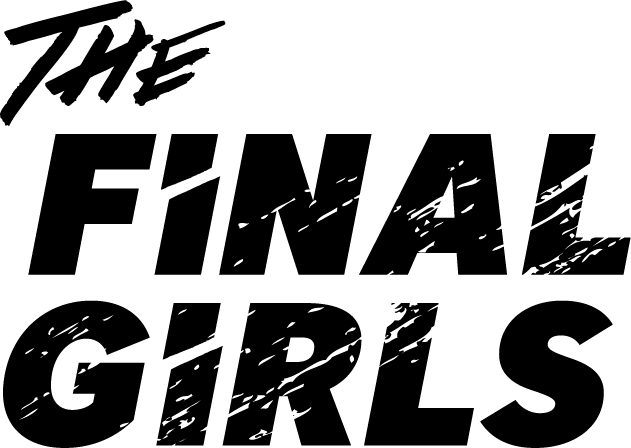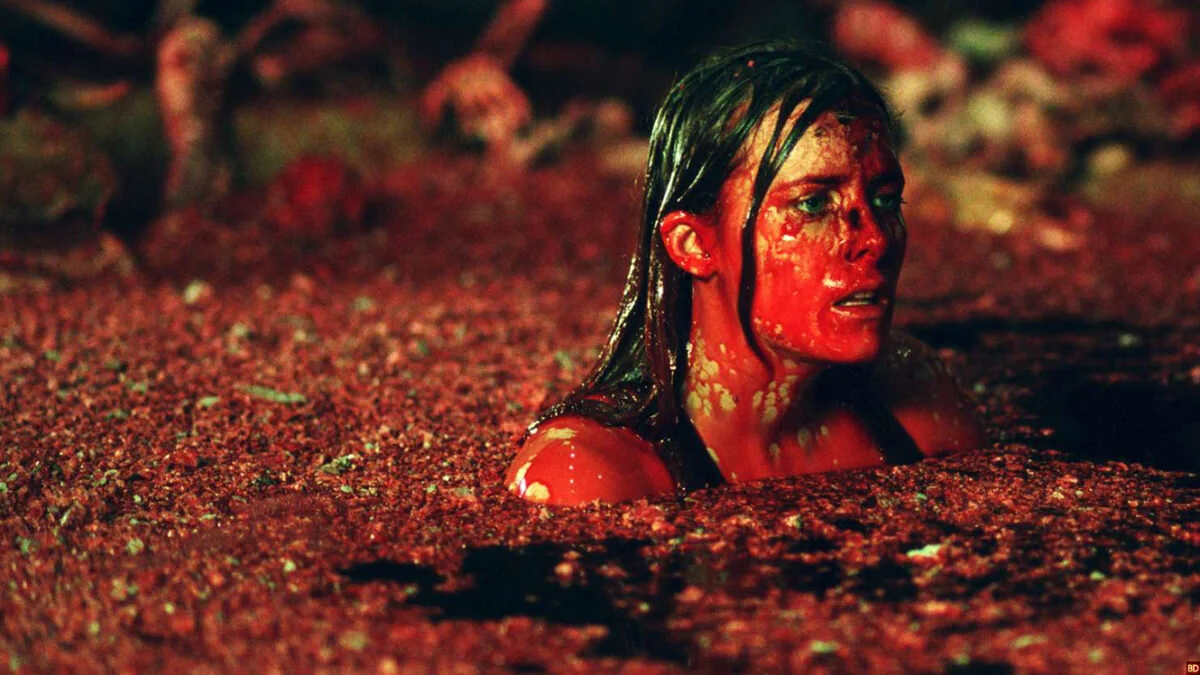A Woman Stuck: Get Out or Die Trying
It’s not hard to imagine how it feels to be trapped. We’ve spent almost a year in lockdown, stuck within the walls of our homes. For most, it’s something we know will eventually end – a task to wait out. For others, it feels like an endless purgatory. Either way, we know that the feeling of being confined in a particular place or state is one of the most frustrating and anxiety-inducing positions to be in.
Horror loves to place its characters in confined and terrifyingly restrictive situations. I can’t help but notice that women seem to be the ones most notably trapped, having to fight their way out of their physical, and often psychological, entrapment.
Host (2020), which released on Shudder during lockdown, is one such example. Set over Zoom, the film follows a group of friends haunted by a malevolent spirit as they hold a virtual séance. Granted, we haven’t all been stalked by a ghostly presence during our calls, but most of us know how it feels to be trapped by a merciless slew of Zoom chats - at least an evil spirit would be a way to liven things up. Host traps us cinematically, not breaking from the visual confines of the familiar squares on the screen, making us feel as if we’re part of the group.
But whether it’s onscreen or IRL, women in horror are twice constrained: at first, formally by the physical conceit of the film, and then, as the narrative reveals, by some internal, emotional prison. Some make it out alone, few make it out together, and some die trying, but all show the torment of being trapped.
The Descent (2005) follows a group of cave-exploring friends lost underground and subsequently stalked by hidden creatures. From the beginning, the film incites the feeling of entrapment. After the protagonist Sarah (Shauna Macdonald) has an accident that kills her husband and daughter, she awakes in hospital. She wanders into the hallway and, on seeing a mutated vision of her daughter, she runs. As she bolts down the corridor, the lights shut off behind her, one by one, enclosing her in an increasingly smaller space as she tries to outrun the dark.
This scene is the first of many to use light and dark to make the characters appear imprisoned. Even in larger, more open parts of the cave where the group are lost, the darkness traps them. Often, they are only lit by small pockets of light from their torches and flares, confined to the spaces they can see. When the group first descends into the cave, the scenery swallows them. As a viewer, from that point on, I felt equally trapped, the walls of the caves closing in on me, too. The further into the dark they go, the more dire their situation becomes. They are gradually separated and get killed off one by one by the underground monsters.
The real evil in The Descent is the cave itself. The tunnels that lead the women further down into darkness and force them into extremely narrow openings. I’ve never struggled with claustrophobia but watching this film had me looking away in discomfort from the crushing, cramped atmosphere. Yet the entrapment isn’t just physical; there is something beneath the surface of these characters that confines them, inwardly.
The women in The Descent are joyous and adventurous, but they are also emotionally trapped. Sarah is suffering indescribably from loss and is imprisoned in her grief, unable to stop seeing images of her daughter, catching herself in moments of quiet sadness. For Juno (Natalie Mendoza), it is her guilt: both the guilt of lying about the route, trapping her friends in the caves, but also from having an affair with Sarah’s husband.
The only thing that appears to help the women through their underground prison is each other. When Sarah is trapped in a tunnel and has a panic attack, Beth (Alex Reid) comes to her rescue and talks her through it, saying, “The worst thing that could have happened to you has already happened.” Once Sarah can finally move, they both narrowly escape falling rocks that cut-off their exit. Ultimately, they need each other to not only survive the caves, but their psychological struggles, too.
The women are by no means passive victims. Quickly, they adapt to the situation and work out how they can outsmart and hold their own against the monsters. The film is incredibly violent, but I was surprised (and let’s face it, delighted) by how much of the violence came from the women. From gouging eyes out to cracking heads open, these ladies aren’t going down without a fight. They are fighting against the monsters, against the dark, and against their entrapment.
In what is possibly the most satisfying unsatisfying ending to ever grace our screens, Sarah manages to claw her way out, escaping into the daylight. As she drives away, soaked in blood, she sees the ghostly apparition of a now dead Juno next to her. We crash back to the darkness of the cave, revealing that she hasn’t escaped and is still stuck down there. None of the women make it out alive. There are no Final Girls here. We can’t always escape our prisons, but these women certainly die trying.
Other examples of trapped women in horror include Gerald’s Game (2017) and Creep (2004). In Gerald’s Game, Jessie (Carla Gugino) remains handcuffed to a bed after a sexual adventure with her husband goes wrong and he dies of a heart attack. In Creep, Kate (Franka Potente) is stuck in the London Underground after falling asleep waiting for the last train. Both films situate themselves in a specific location but also have deeper implications for their trapped characters. In Gerald’s Game, after being confined to the bed for so long, Jessie hallucinates and reflects on her tumultuous relationship with her husband, and her sexual abuse as a child. As for Kate in Creep, being trapped, completely alone in the Underground? It would quickly become anyone’s worst day, but for a woman to be trapped alone on public transport, there is a particularly unnerving undertone. Both Jessie and Kate manage to escape their prisons, with Jessie ripping the skin off her hand to get out and Kate managing to last the night, surviving to see morning commuters arrive. But neither women is truly free. We know they will carry the physical and mental scars of their entrapment, even as they are no longer captive.
The idea of women being trapped is nothing new. Historically, emotionally, and culturally, there has always been undertones of women being confined. These films take that concept and portray it in a very literal, visceral way. It is not always easy to escape the traps that have been set for us, or that we sometimes set ourselves. However, we can look at these characters and know that the important thing is to try and fight back, against our prisons, kicking and screaming. Host, The Descent, Gerald’s Game and Creep are all extremely different in style and substance, but they have one core detail in common: they show us the true horror of what it means to be a woman stuck.
Jessica Cullen is a freelance writer from London. She has written for Flip Screen, Screen Queens, and has a weekly newsletter in which she reveals pages from her childhood diaries. You can follow her on Twitter here.
We've been going independently for years now, and so far have self-financed every single project. In order to do more work, and continue supporting amazing filmmakers in the genre space, we've launched a Patreon.
If you are able to support us and the work we do on Patreon, we'd truly and deeply appreciate it.


